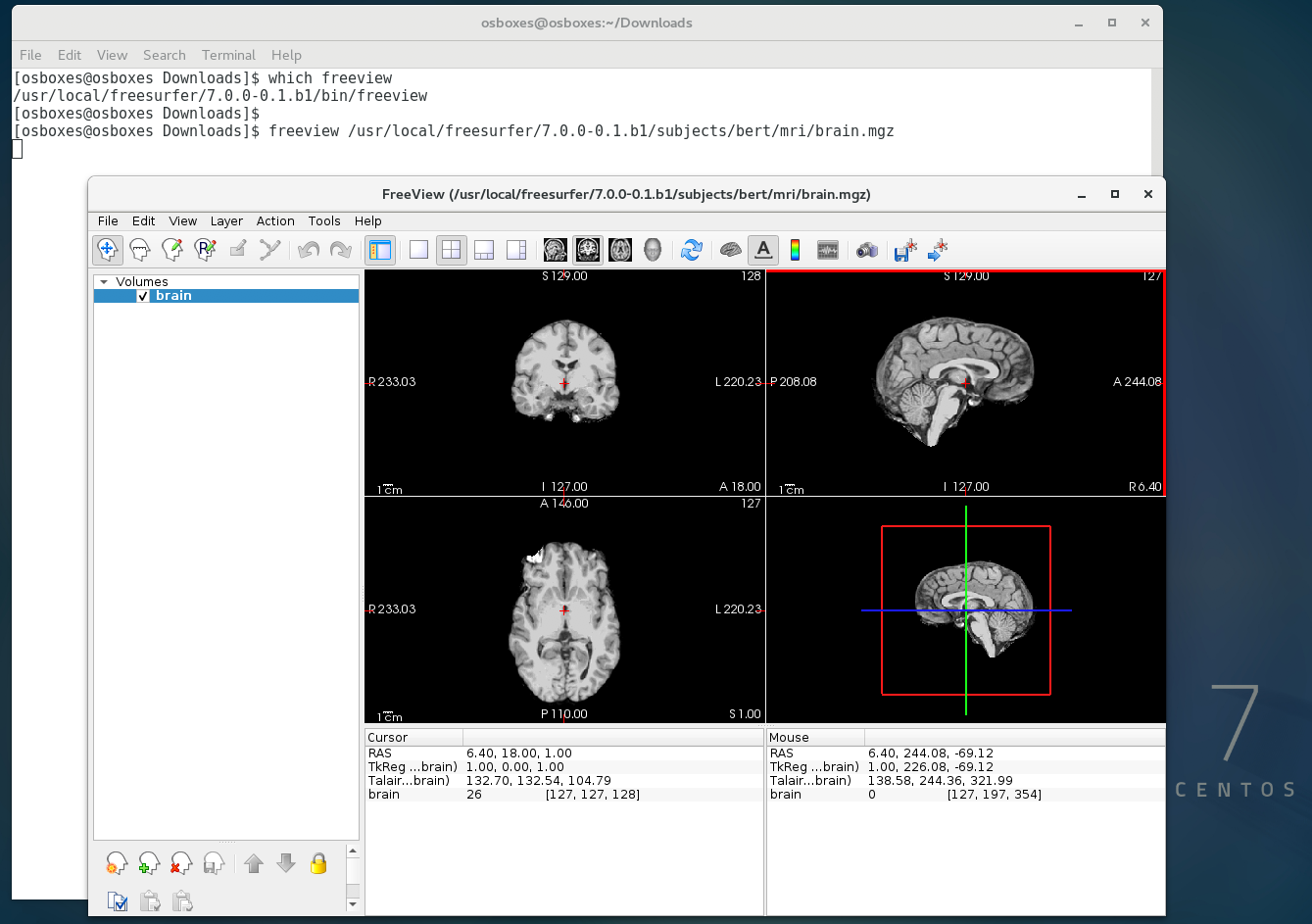Linux Install & Setup
The examples below show how to unpack/install the Freesurfer 7.0.0 beta 1 CentOS 7 tar archive, freesurfer-linux-centos7_x86_64-7.0.0-beta.tar.gz, or rpm file, freesurfer-CentOS7-7.0.0-0.1.b1.x86_64.rpm. However if you are working with CentOS 6 then you would use the same commands, but instead run those commands on the CentOS 6 tar archive, freesurfer-linux-centos6_x86_64-7.0.0-beta.tar.gz or the CentOS6 rpm file, freesurfer-CentOS6-7.0.0-0.1.b1.x86_64.rpm.
On Linux systems, the tar archive file (.tar.gz) can be expanded under any convenient path/subdirectory on your machine you have permission to write to. For example, you can expand the tar archive under your $HOME directory. To install freesurfer under a recommended shared system location, e.g., /usr/local, you will typically need sudo or root privileges. Please note that if you have sudo/root privileges, then you should consider using the RPM file (.rpm) to install the freesurfer 7.0.0 beta 1 release. The linux package management tools provide the advantage of trying to install any software packages freesurfer depends upon that are not already installed on your system as part of installing freesurfer under /usr/local/freesurfer/<package version>.
Example of placing the CentOS7 tar archive under the $HOME directory belonging to user "tester" without using sudo/root privileges. Setup commands follow. Shell is bash or Bourne shell.
$ cd $HOME $ pwd /home/tester $ tar -zxvpf freesurfer-linux-centos7_x86_64-7.0.0-beta.tar.gz x freesurfer/ x freesurfer/WMParcStatsLUT.txt x freesurfer/sessions/ x freesurfer/sessions/README ... .. <rest of output deleted> $ cd freesurfer $ pwd /home/tester/freesurfer $ export FREESURFER_HOME=$HOME/freesurfer $ export SUBJECTS_DIR=$FREESURFER_HOME/subjects $ source $FREESURFER_HOME/SetUpFreeSurfer.sh -------- freesurfer-linux-centos7-x86_64-7.0.0-beta-xxxxxx -------- Setting up environment for FreeSurfer/FS-FAST (and FSL) FREESURFER_HOME /home/tester/freesurfer FSFAST_HOME /home/tester/freesurfer/fsfast FSF_OUTPUT_FORMAT nii.gz SUBJECTS_DIR /home/tester/freesurfer/subjects MNI_DIR /home/tester/freesurfer/mni $ which freeview /home/tester/freesurfer/bin/freeview
Example of placing the CentOS7 tar archive under the system location /usr/local by user "tester" using sudo/root privileges. Setup commands follow. Shell is bash or Bourne shell.
$ cd $HOME $ pwd /home/tester $ sudo tar -C /usr/local -zxvpf freesurfer-linux-centos7_x86_64-7.0.0-beta.tar.gz x freesurfer/ x freesurfer/WMParcStatsLUT.txt x freesurfer/sessions/ x freesurfer/sessions/README ... .. <rest of output deleted> $ export FREESURFER_HOME=/usr/local/freesurfer $ export SUBJECTS_DIR=$FREESURFER_HOME/subjects $ source $FREESURFER_HOME/SetUpFreeSurfer.sh -------- freesurfer-linux-centos7-x86_64-7.0.0-beta-xxxxxx -------- Setting up environment for FreeSurfer/FS-FAST (and FSL) FREESURFER_HOME /usr/local/freesurfer FSFAST_HOME /usr/local/freesurfer/fsfast FSF_OUTPUT_FORMAT nii.gz SUBJECTS_DIR /usr/local/freesurfer/subjects MNI_DIR /usr/local/freesurfer/mni $ which freeview /usr/local/freesurfer/bin/freeview
Using the Linux Package Manager (yum)
The "yum" package manager command is available on Redhat linux and its derivatives (like CentOS) to install, manage, and update the system software. System packages in the form of *.rpm files typically contain source, binaries and/or libraries to install on the system. The *.rpm package also usually contains a list of the system libraries and programs the *.rpm package contents will need in order to run after installation. Yum compares the system dependency information in the *.rpm package against what is currently installed on the system. Then it determines what if any other *.rpm packages need to be downloaded and installed first in order to satisfy the dependencies in the package(s) you have listed on the yum install command line. Yum will present a list of all packages it determines should be installed before installing the packages you ask for. You can accept or refuse to install the list of packages yum provides. Answering no ("N") to yum will cause no software to be installed and leave the system unchanged.
Exploring the broad range of yum command line options is beyond the scope of this freesurfer install example. But it's not surprising that sudo or root privileges are needed to install or change the packages installed on a system. (Note that a non-privileged user should be able to run yum without sudo and see what is/is not installed on the system).
If the yum command has not been run in a while, the first thing it will do is update the list of the package repositories on the web it uses to search for and download packages from. If we ask yum to tell us if freesurfer is already installed, you might see output like this from yum reporting it is updating the list of available packages and the sites to fetch them from.
$ yum list installed | grep -i freesurfer updates (1/2) epel/x86_64 updateinfo (2/2) updates/7/x86_64/primary_db ... .. <output deleted / your output will vary> . Determining fastest mirrors * base: mirror.siena.edu * epel: ewr.edge.kernel.org ... .. <output deleted / your output will vary> . $
The result of the above command is that nothing was printed out listing an installed freesurfer package and its version number. Or in the example below, the assumption is that no freesurfer package is currently installed on the system.
We provide a freesurfer *.rpm package for download that is not part of an existing Redhat, CentOS or third-party repository. Yum by default assumes the package is available from an existing collection it has been configured to search for. So in response to the most basic command to install a "freesurfer" package, yum will search through every repository it knows about, find nothing, and then give up.
$ sudo yum install freesurfer Loaded plugins: fastestmirror, langpacks base centos-sclo-rh centos-sclo-sclo epel/x86_64/metalink epel extras fpco rpmforge updates ... .. <output deleted / your output will vary> . No package freesurfer available. Error: Nothing to do $
The remedy is to provide command line options to tell yum: (1) the package is not signed as it would be in an online repository; (2) the freesurfer rpm is local to the machine and not to be searched for or downloaded from a repository.
$ sudo yum --nogpgcheck localinstall freesurfer-CentOS7-7.0.0-0.1.b1.x86_64.rpm
Previewing the install
The screen shots below show what the yum package manager reports should be installed for a particular machine running CentOS 7.4. Typing "N" will cancel the install of all software. At the time of this writing, the current revision of CentOS is 7.7. So if you are running a newer version of CentOS compared to CentOS 7.4, and you already have packages like the gcc tools installed on your system, then yum will likely report fewer packages need to be updated and/or installed prior to installing the freesurfer package.
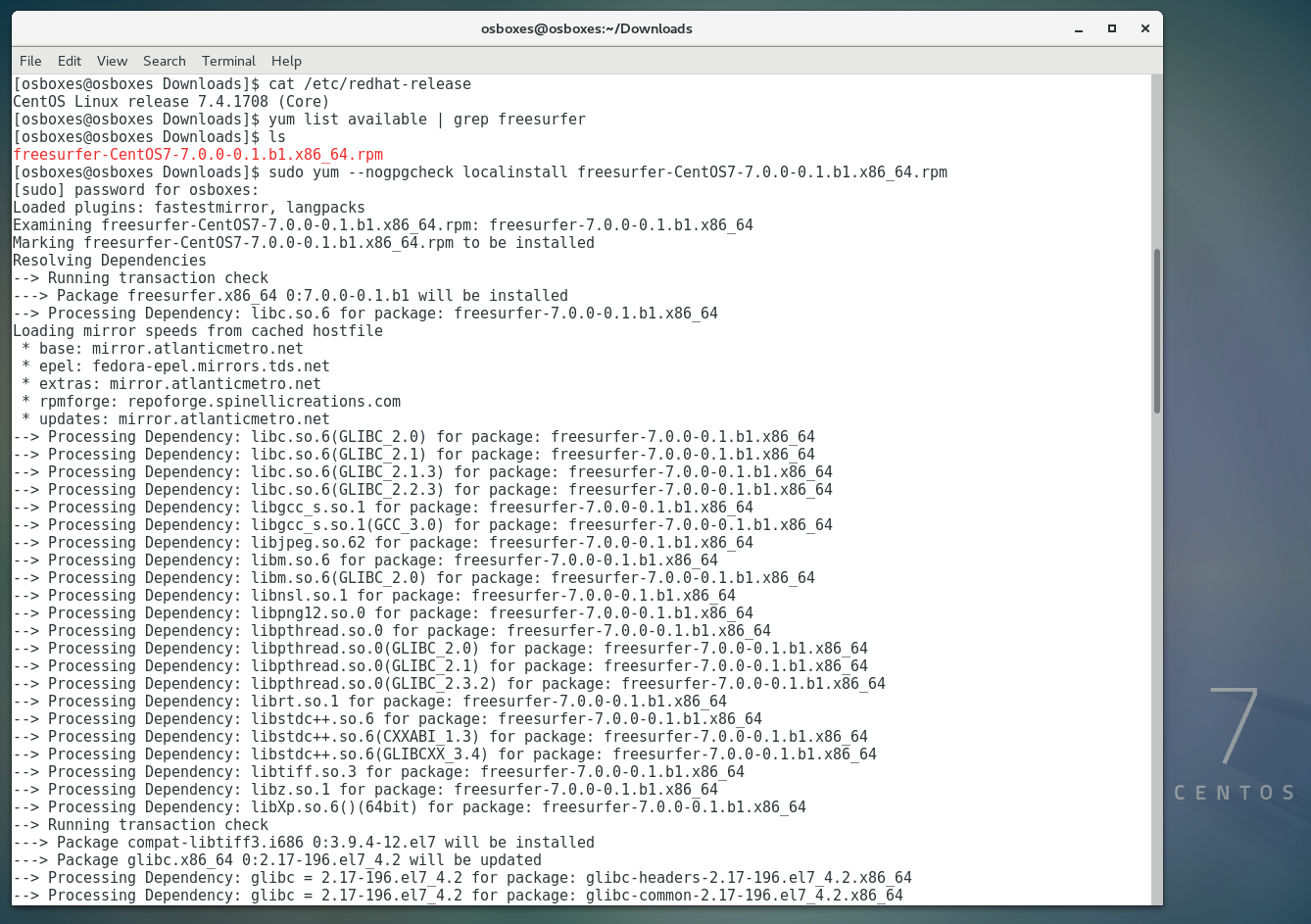
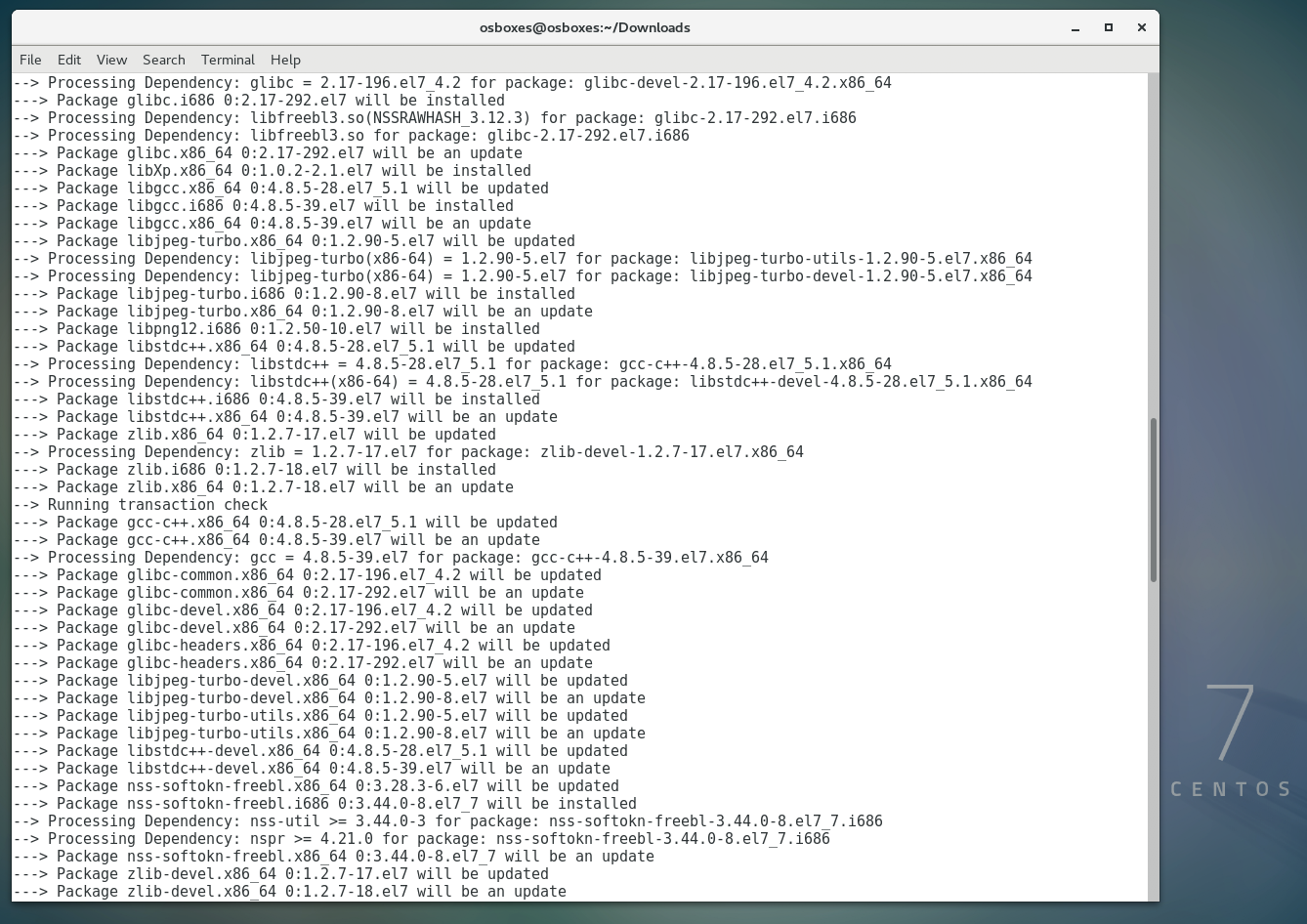
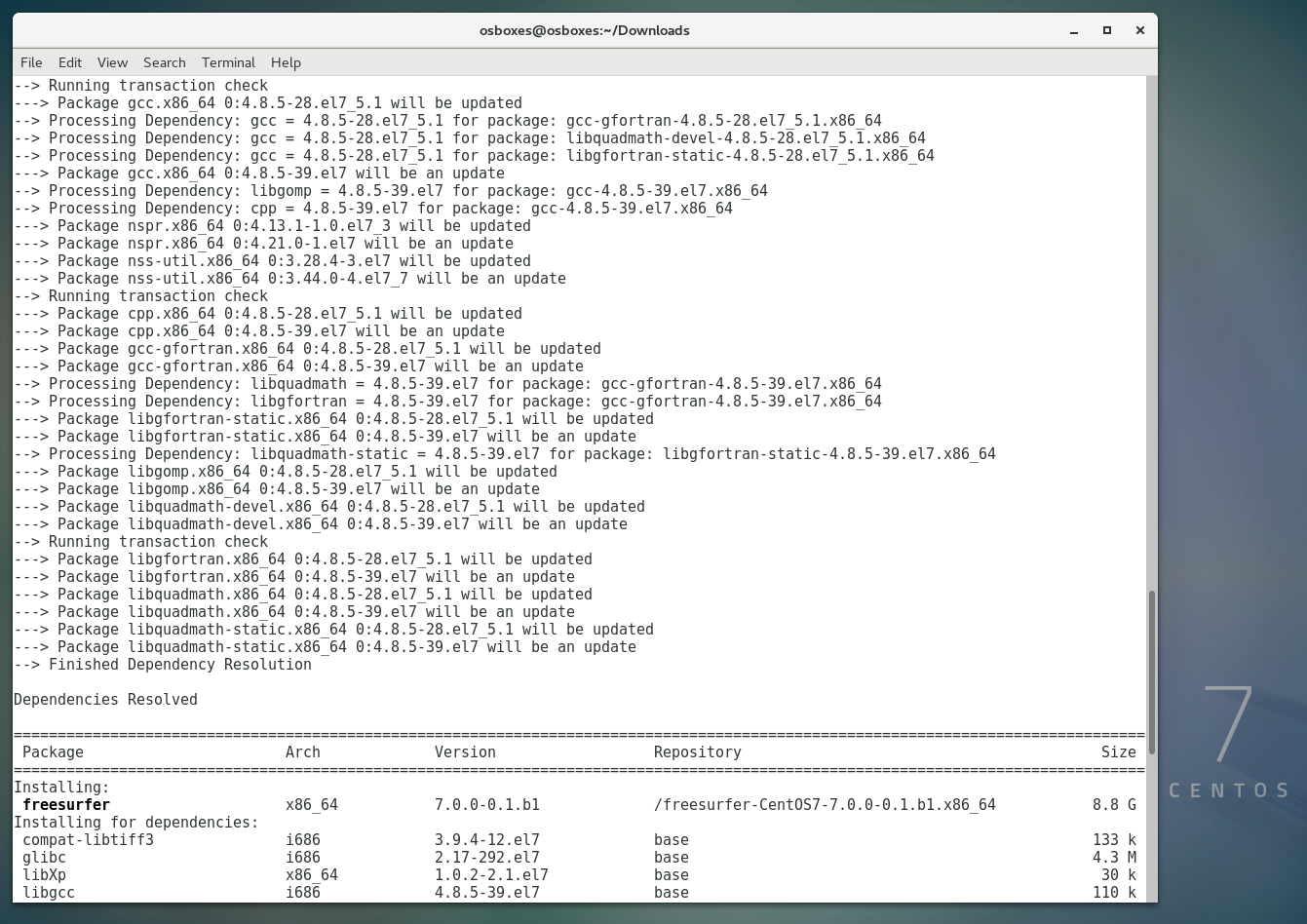
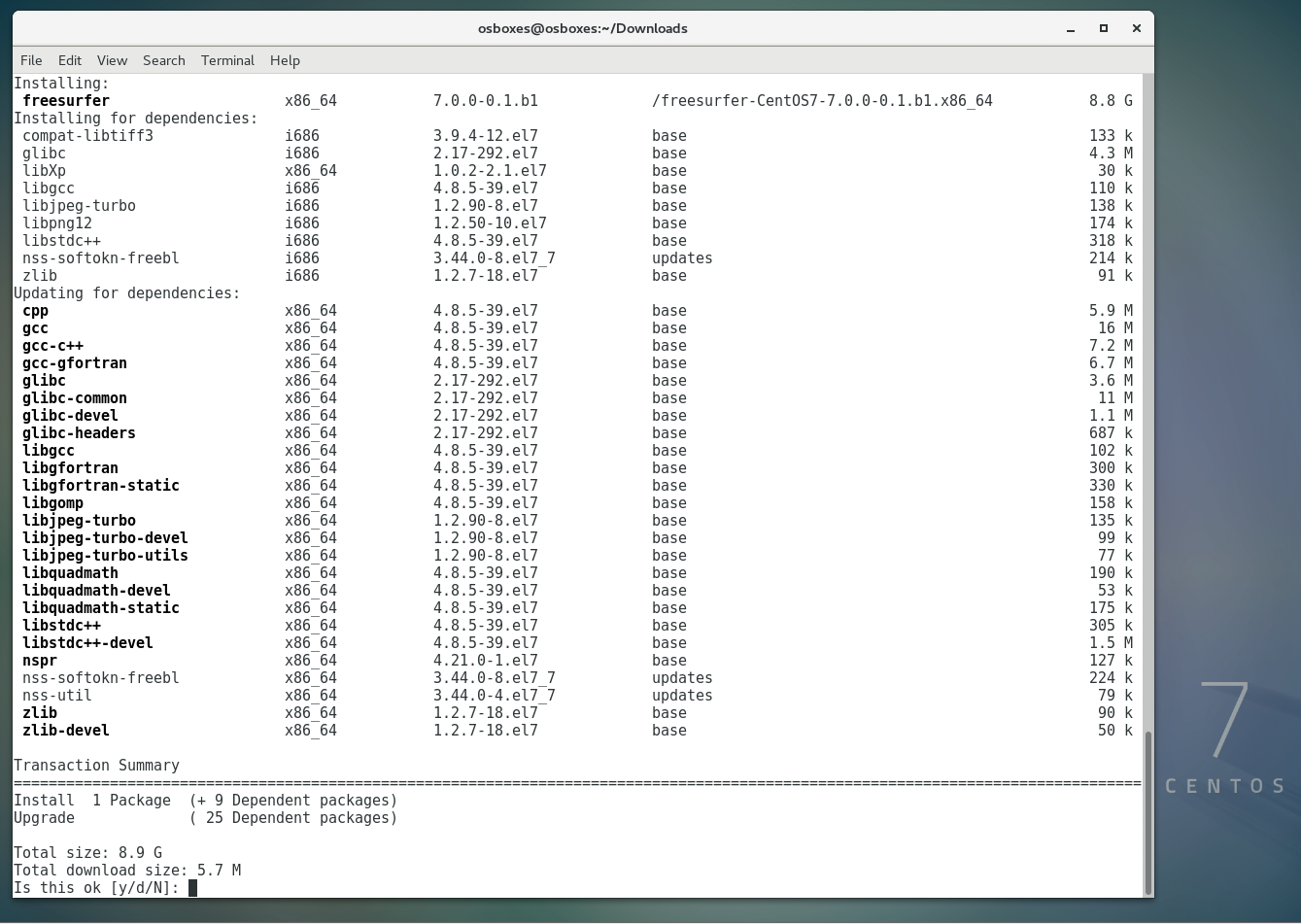
Performing the install
The screen shots below show what the yum package manager reports has been installed on the system after the install is accepted.
Please note - if you already have freesurfer installed as /usr/local/freesurfer, e.g., per the example above, then it is strongly advised that you remove the installation or rename the directory to be something other than freesurfer under /usr/local. This is because the rpm installer will install freesurfer under the path /usr/local/freesurfer/<package version>
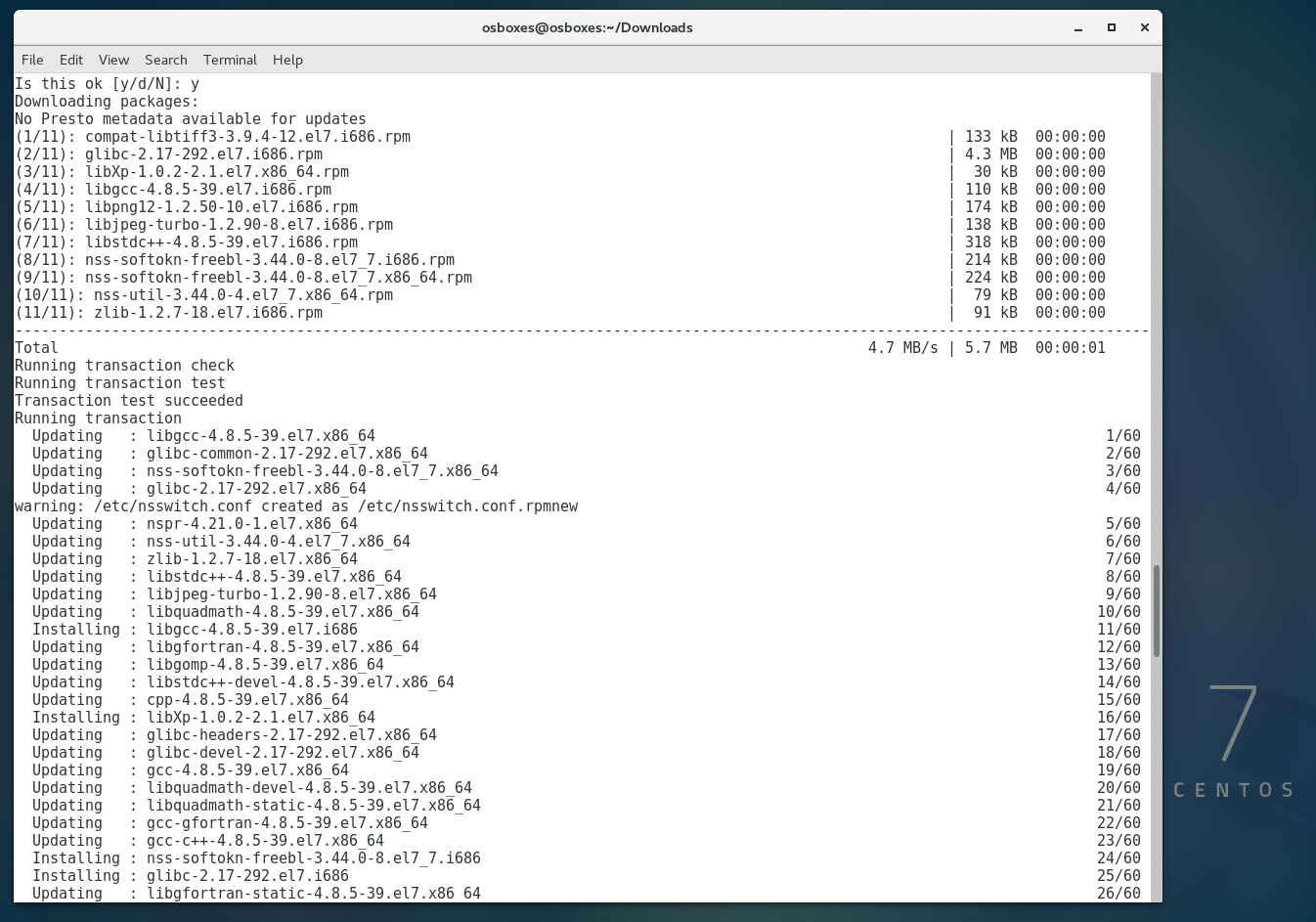

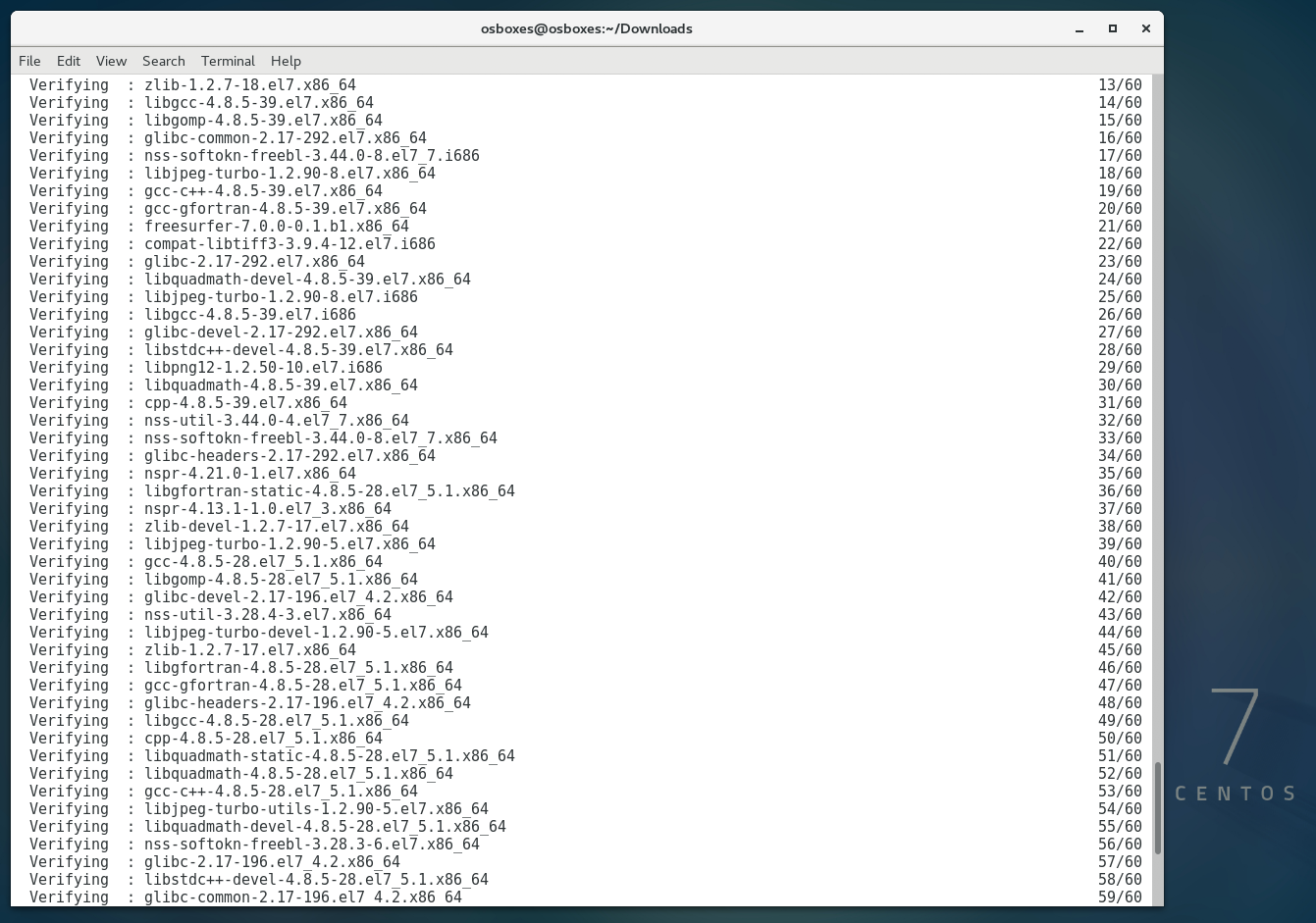
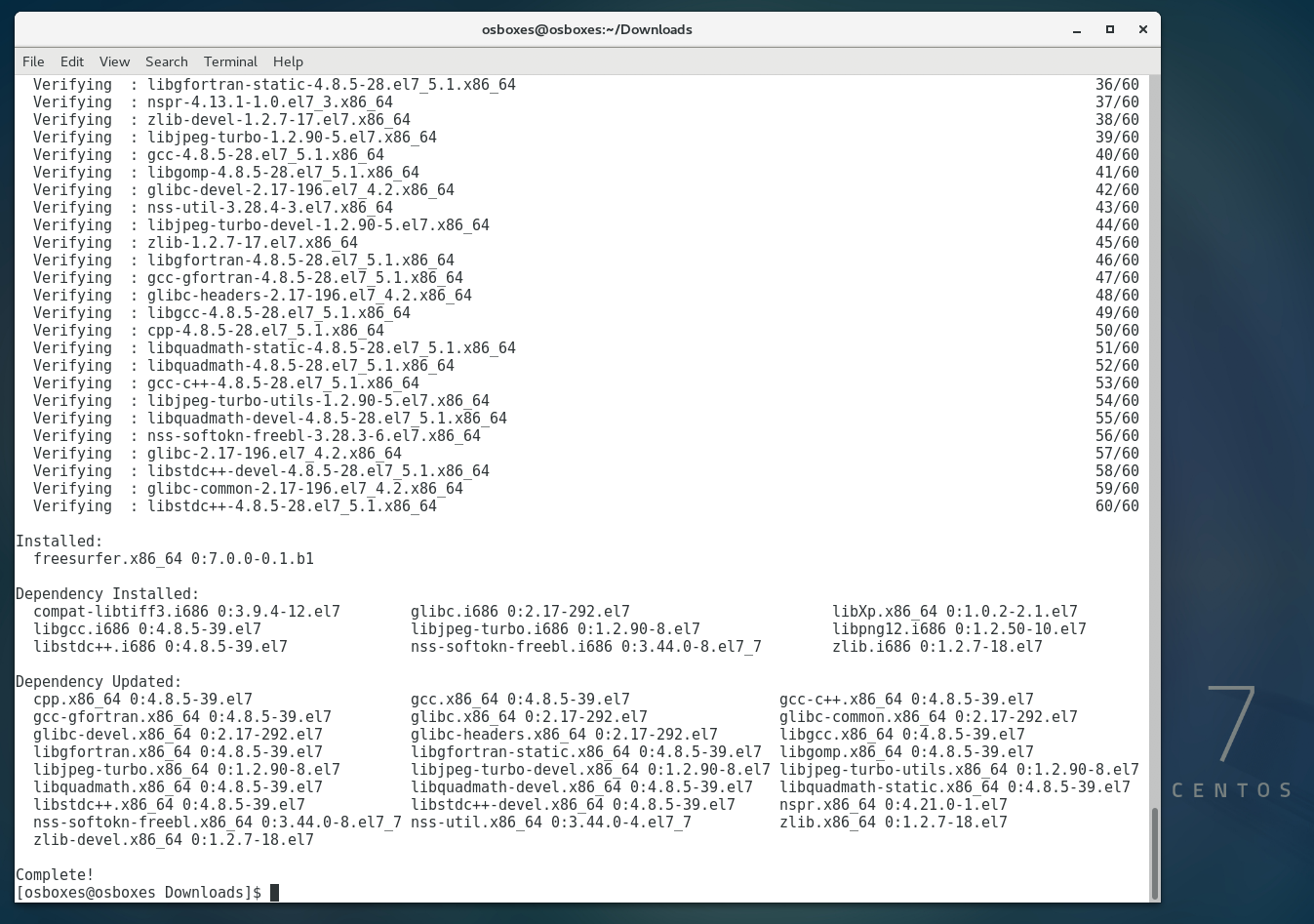
Verifying the install & Setup
We can ask yum again if freesurfer is installed - and this time the answer should be yes. Note that freesurfer was installed under /usr/local/freesurfer in a subdirectory that matches the package revision yum lists as installed on the system. Subsequent freesurfer rpm packages with higher revision numbers will be recognized by yum as upgrades to be installed on the system.

Setting the environment follows the same procedure as listed above except the path for FREESURFER_HOME is now /usr/local/bin/freesurfer/7.0.0-0.1.b1.

Finally, a simple test to see if the freeview application can load a volume.
